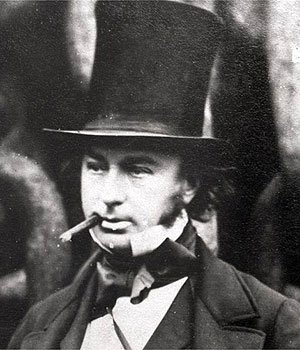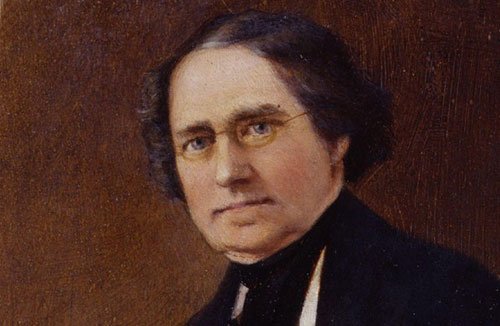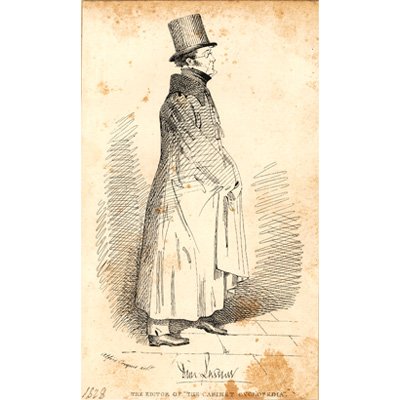Dionysius Lardner, Scientific Populist
The Reverend Dionysius Lardner, LLD, Professor of Natural Philosophy and Astronomy in the University of London, FRSE, Hon. FPS Camb., FAstSL, Hon. FSA Scot. and MRIA was, as you might gather, somewhat of a polymath. Born in Dublin to that peculiar class of people, the “Dublin English” [1], he was originally slated to enter his father’s trade of solicitor, but after a few years of deskwork he managed to persuade his parents that academia was his true calling. At the age of 19 he entered Trinity College, Dublin, and exited seven years later with an MA. He spent several years as an occasional lecturer in Dublin, and published several books on geometry and calculus aimed at the layman. This was his genius – the ability to explain complicated subjects in an easily comprehensible manner; and it was a skill that would serve him well his whole life. In 1828 he was recruited by the newly formed University College London [2] as the first occupant of their Chair of Natural Philosophy and Astronomy.

In London, Lardner soon became a popular and well-respected giver of public lectures. In 1834, for example, he was approached to write (and in some venues, give) the lectures that accompanied Charles Babbage’s Difference Engine as it was toured around the country [3]. However his crowning achievement, and what made him a household name, was his Cabinet Cyclopædia. A book series of 133 volumes, this series was designed to capitalise on the “encyclopedia craze” of the Victorians. Lardner began the series in 1827, shortly after arriving at UCL, and volumes continued to be released until 1841. Several notable writers of the day participated, including Mary Shelley, Walter Scott and John Herschel. Lardner himself wrote on mathematics and physics for the Cyclopædia, while the Dublin poet Thomas Moore wrote a two-volume history of Ireland that was very well received by the critics. But the financial side of the project did not pan out so well. Low sales on some volumes and higher than expected costs (which were already high due to the lavish illustrations and high quality of the books) led to several of the high profile authors Lardner had lined up pulling out, and as a result print runs of later volumes were significantly reduced. Still, the series was popular enough that some volumes would remain in print right up until 1890, 50 years after they were published.

But regardless of all his accomplishments, it is for his failings that Lardner is chiefly remembered today. In 1835 he was hired by the London and Southampton Railway to help them in opposing the Great Western Railway which was being built by Isambard Kingdom Brunel. They had their own rival scheme in the works, and so they sought to bring down the upstarts. Lardner’s first target was the “broad gauge” which Brunel was using on his line [4]. In a series of experiments he claimed to show that their flagship train, the North Star, was inefficient at high speeds. Brunel scrutinised his results, and based off them increased the size of the exhaust, which had been insufficient to handle the smoke at those speeds. This immediately more than offset the effect Lardner had noted. His next target was Box Tunnel, a 1.83 mile tunnel between Bath and Chippenham that was planned as part of the line. He claimed that the 1% slope meant that if a train’s brakes failed as it entered the tunnel then by the time it exited it would be travelling at over 120mph and would surely leave the rails and be destroyed [5]. Brunel was once again able to refute this, by showing that Lardner had failed to take into account the increase in air resistance that the train would encounter in the confines of the tunnel, and that it would actually be travelling at no more than forty miles an hour – around its normal speed. That was Lardner’s last attempt to derail the GWR, though it was not his last attempt to spike Brunel. When Brunel was building his steamship the SS Great Western to cross the Atlantic, a feat never before done under steam, Lardner confidently informed the British Association for the Advancement of Science “
it was perfectly chimerical, and they might as well talk of making the voyage from New York to the moon
claiming that the diminishing returns between capacity to carry coal and water resistance would see them stranded two thirds of the way across. In 1838 the Great Western steamed into New York harbour. Once again, Lardner had made a basic mathematical error – while the water resistance scaled with the square of the ship’s length, the carrying capacity scaled with the cube. Brunel had triumphed once more.

In the end, though, it was not these public humiliations that prompted Lardner’s fall from grace with the British public, but rather events of a far more salacious nature. In 1840 he eloped to Paris with Mary Spicer Heaviside, wife of a captain in the Dragoon Guards. This was not the first time he had been involved with a married woman. In fact he himself had been married when he lived in Dublin, but he had wound up becoming divorced due to his affair with Anne Maria Darley Boursiquot, the wife of a Dublin wine merchant. It is considered very likely that he even had a child with her, as though her husband’s name was on the birth certificate, she named the boy Dionysius Lardner Boursiquot, and Lardner supported him financially until his disgrace in 1840. [6] Captain Richard Heaviside was made of far sterner stuff than any Dublin merchant however, and he and Mary’s father followed the couple to Paris, where he “beat Lardner severely”, but could not persuade Mary to return. Instead he took Lardner to court, on the charge of “criminal conversation”, as the crime of adultery was then called. [7] The trial was highly publicised and documented the couple’s affair in lurid detail. Lardner was very much the villain to Victorian eyes, but this was in part due to their habit in ascribing any agency in a relationship to the man involved rather than the woman. Heaviside was a violent man, and doubtless Mary had more than her share of reasons for wanting to leave him. Lardner, on the other hand, was devoted to her, and the two would remain together until his death. The Victorian court declined to take this enlightened view, however, and Captain Heaviside received £8,000 in damages. With the scandal, Lardner was effectively exiled from London.

That was not the end of Lardner’s scientific career though. Prior to marrying Mary in 1846, he went on a lecture tour in America to raise the funds to support himself. The tour was a major success and was a big windfall for Lardner, both immediately and in long-term income due to his lectures being published and sold in the American market. Of course, this financial success was aided by a side job he took while passing through Philadelphia, where he was paid by the locomotive manufacturing firm Norris Brothers to appear as an expert in their defense. One of the boilers on the trains they had manufactured had exploded, with fatal consequences. Despite testimony from the plaintiff’s experts that the explosion had been due to a combination of faulty pumps letting it run dry and shoddy materials (cast iron rather than wrought), and despite the weather on the day having been totally clear, Lardner was able to convince the judge that the explosion had been caused by the strike of a bolt of lightning, and had the case thrown out as due to “act of God”. Following his US tour, Lardner returned to Paris. In 1850 he published Railway Economy, an analysis of the impact of rail transport that argued for state regulation rather than private industry, and which would be cited later by Karl Marx in Das Kapital. In 1859, the man who Charles Dickens once referred to as “the prince of humbugs” died. In truth, he was a man of boundless enthusiasm but few scruples. He had done much to bring science to the common man, but in the end history would remember him only for his failures.
Images via wikimedia.
[1] People whose families had lived in Dublin for generations – possibly even centuries – but who still nonetheless considered themselves as English people living in Ireland, rather than Irish.
[2] Notable as the first entirely secular university in the United Kingdom. Before this, any degree in a university had by necessity to be accompanied by an ecclesiastical title – hence Lardner’s degree in divinity which gave him the title of “Reverend”, though he never practiced as a preacher.
[3] In a foreshadowing of things to come, Lardner was prevailed upon by his sponsors to downplay Babbage’s predictions for the mathematical possibilities the engines possessed, and instead to dwell on the dangers posed to the public by errors in tables of calculations used for daily tasks, and how the engines could solve this (barely existing) “problem”. Depressingly, the lectures were a major success and Lardner published a book based on them. In the long run, this did a lot to hurt Babbage’s cause as experts, knowing that tabular errors were few and far between, assumed the engines had no real merit.
[4] Brunel’s railway had the rails 7 feet apart, which he considered technically superior to the “standard gauge” of 4 feet 8.5 inches used elsewhere in the country. This also had the effect of giving the GWR-built trains a monopoly on their lines. In the end, standard gauge would win out, though “rivet counters” who sympathise with Brunel will still happily argue the point.
[5] There is an apocryphal story that he claimed that travel at such a speed would be instantly fatal due to asphyxia, but there is no evidence that he ever said such a thing and it would have been at odds with his level of knowledge.
[6] The boy would grow up to become one of the leading lights of Victorian-era theatre under the name of Dion Boucicault. He achieved fame as both a playwright and actor, but in 1885 he proved that the apple had not fallen far from the tree by causing a massive scandal when he left his wife for an actress nearly thirty years his junior, and then by marrying her before his divorce had been finalised, causing him to face a charge of bigamy.
[7] This was a civil crime, based on the notion of damage to the man’s reputation and “property” (i.e. wife). The implicit sexism of Victorian society can be seen in that the target was not the wife herself but rather the adulterer, and that there was not even the legal concept of a wife suing her husband for the crime.
